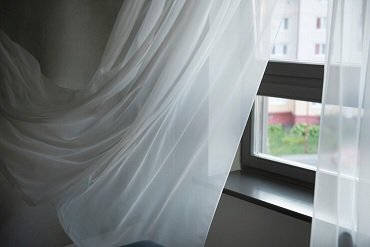In the realm of symbolism, few objects evoke as much intrigue and mystique as velvet curtains. These rich, extravagant curtains have enhanced the phases of excellent theaters, the windows of sumptuous chateaus, and the offices of eminence for quite a long time, doing magic of class and refinement any place they hang. However, past their stylish allure, velvet shades convey a more profound emblematic importance, rising above simple texture to typify thoughts of force, mystery, and disclosure.
At its center, velvet is a texture of extravagance and glory. Its delicate, rich surface radiates a demeanor of loftiness, representing abundance, honor, and excess. By and large, velvet was held for the first class, inclined toward by respectability and privileged as an image of their raised status. Accordingly, when velvet drapes are drawn, they emblematically parcel spaces of honor and qualification, isolating the universe of the tip top from the domain of the normal.
Besides, velvet shades have for some time been related with the dramatic expressions, filling in as a scenery for exhibitions that transport crowds to universes both genuine and envisioned. In this unique circumstance, the demonstration of stepping back the velvet shade turns into a snapshot of disclosure, flagging the divulging of bits of insight, feelings, and stories taken cover behind the façade of daily existence. The actual stage turns into a figurative edge, where reality and deception unite, welcoming watchers to suspend doubt and draw in with the unfurling show.
Past their part in the theater, velvet shades have likewise been sent as instruments of force and control. In the courts of lords and heads, velvet curtains enhanced privileged positions and gathering chambers, disguising the ruses of rulers and safeguarding their choices from public examination. Consequently, the closing of velvet draperies could mean the commencement of secret issues or the burden of power, covering procedures in an emanation of secret and interest.
Besides, velvet drapes hold a representative reverberation in strict and otherworldly settings. In many societies, sanctuaries, temples, and sacrosanct spaces are decorated with rich curtains, including velvet, to make an air of love and wonderment. The stepping back of these draperies during customs and functions turns into a formal motion, representing the launch of entryways between the natural domain and the heavenly, welcoming admirers to witness the extraordinary secrets past.
In writing and craftsmanship, velvet draperies frequently highlight conspicuously as themes weighed down with representative importance. From Shakespearean dramatizations to Gothic books, the symbolism of velvet drapes has been utilized to inspire subjects of mystery, disclosure, and the interaction among appearance and reality. In compositions and photos, the luxurious folds of velvet act as visual analogies, welcoming watchers to contemplate the profound implications hiding underneath the surface.
In conclusion, velvet curtains are more than mere decorative elements; they are potent symbols that resonate across cultures and epochs. From their associations with wealth and privilege to their role in theatrical performances and religious rituals, velvet curtains exemplify a complicated interchange of subjects connected with power, mystery, and disclosure. Whether enhancing the corridors of eminence or the phases of fabulous theaters, these rich curtains keep on enrapturing the creative mind, welcoming us to contemplate the secrets they disguise and the bits of insight they reveal.
















